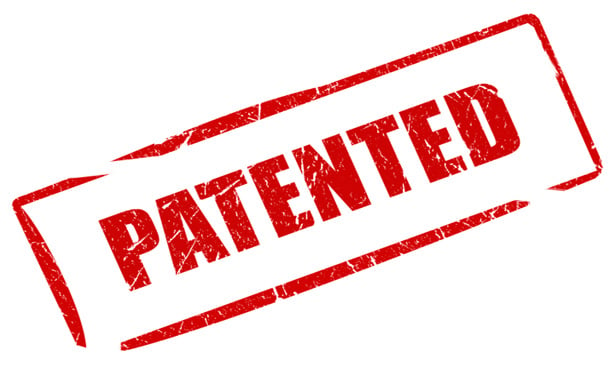Features

Implications of 'Amgen v. Sanofi' On the State of Enablement Law
The decision appears to take steps to harmonize the prior cases that appropriately were guided by the Wands factors with the cases discussing the "full scope" of enablement that have engendered some confusion in the law.
Features

Synergizing Patents to Drive Innovation and Growth
As intellectual property continues to influence business operations, more companies are considering defensive patent pools as a strategic measure to guard against threats that can stifle innovation and growth for both businesses and industries.
Features

11th Circuit Rules for Stephen King In Suit Over Dark Tower Series
Vincent Cox of Ballard Spahr in Los Angeles and Scott Ponce of Holland & Knight in Miami prevailed recently in the U.S. Court of Appeals for the Eleventh…
Features

Equity In Broad and Flexible Fashion
Federal Circuit Wasn't Chicken to Grant Equitable Intervening Right in Poultry Processing Equipment Case A dispute between the two titans in the poultry processing equipment market led the U.S. Court of Appeals for the Federal Circuit to construe the term "protection of investments" in 35 U.S.C. §252.
Columns & Departments
IP News
On March 12, the Federal Circuit granted Janssen Pharmaceutica's motion to dismiss Mylan Laboratories' appeal and denied Mylan's request for mandamus relief, holding that it lacked jurisdiction to hear Mylan's appeal.
Features

Patent Litigation Growth In 2020 Points to Sustained Activity In 2021
Despite the recession — or partly as a result of it — 2020 was also a year of growth for patent litigation in the United States. This article provides a look back at patent litigation filing statistics in recent years across district courts in the United States, with an eye toward current trends that in all likelihood will continue deep into 2021.
Features

New COVID Relief Bill Brings Changes to Trademark and Copyright Practice
The new, more than 5,000-page spending bill, which includes the latest COVID-19 relief, had a few surprises under its cover. Two of those surprises focus directly on intellectual property and amount to sea changes in the trademark and copyright infringement realms.
Features

Copyright and Internet Content
Online publication impacts the duration of copyright protection among other purposes, including optimizing creative and ownership rights and the availability of statutory damages and attorney fees. Thus, it is important to determine when Internet distribution constitutes publication.
Columns & Departments
IP News
Federal Circuit: Texas Court Abused Its Discretion By Delaying On Venue Transfer Motion While Proceeding With the Merits of the Case Federal Circuit: PTAB Violates the APA When It Sua Sponte Adopts a New Claim Construction to Support New Theory of Invalidity for First Time
Features

Northern District of California Holds Vanity License Plates Are Not Government Speech
California DMV regulations excluding plaintiffs' personalized plates were like the PTO trademark registration restrictions of SLANTS and FUCT — restrictions struck down by the U.S. Supreme Court for violating the First Amendment.
Need Help?
- Prefer an IP authenticated environment? Request a transition or call 800-756-8993.
- Need other assistance? email Customer Service or call 1-877-256-2472.
MOST POPULAR STORIES
- The DOJ's New Parameters for Evaluating Corporate Compliance ProgramsThe parameters set forth in the DOJ's memorandum have implications not only for the government's evaluation of compliance programs in the context of criminal charging decisions, but also for how defense counsel structure their conference-room advocacy seeking declinations or lesser sanctions in both criminal and civil investigations.Read More ›
- Bankruptcy Sales: Finding a Diamond In the RoughThere is no efficient market for the sale of bankruptcy assets. Inefficient markets yield a transactional drag, potentially dampening the ability of debtors and trustees to maximize value for creditors. This article identifies ways in which investors may more easily discover bankruptcy asset sales.Read More ›
- Use of Deferred Prosecution Agreements In White Collar InvestigationsThis article discusses the practical and policy reasons for the use of DPAs and NPAs in white-collar criminal investigations, and considers the NDAA's new reporting provision and its relationship with other efforts to enhance transparency in DOJ decision-making.Read More ›
- Supreme Court Asked to Assess Per Se Rule Tension in Criminal AntitrustIn recent years, practitioners have observed a tension between criminal enforcement of the broadly written terms of the Sherman Antitrust Act of 1890 and the modern Supreme Court's notions of statutory interpretation and due process in the criminal law context. A certiorari petition filed in late August in Sanchez et al. v. United States, asks the Supreme Court to address this tension, as embodied in the judge-made per se rule.Read More ›
- The DOJ's Corporate Enforcement Policy: One Year LaterThe DOJ's Criminal Division issued three declinations since the issuance of the revised CEP a year ago. Review of these cases gives insight into DOJ's implementation of the new policy in practice.Read More ›
